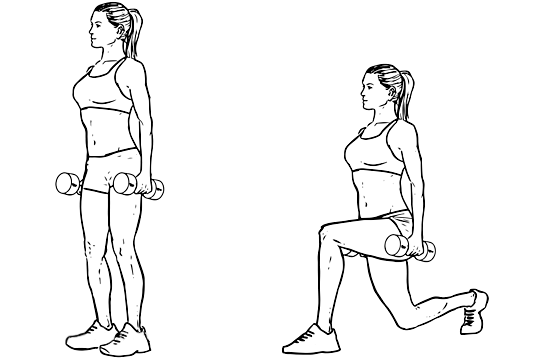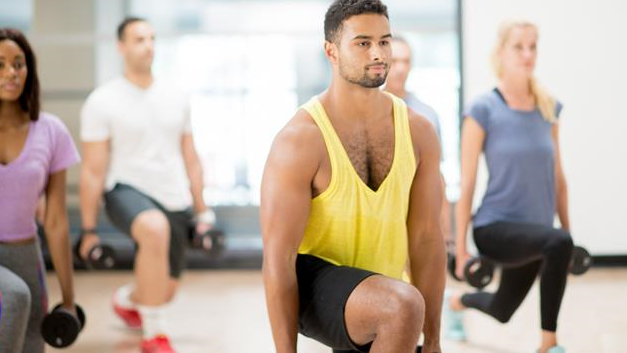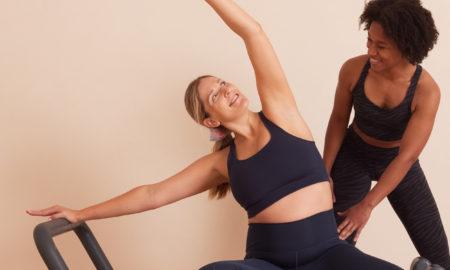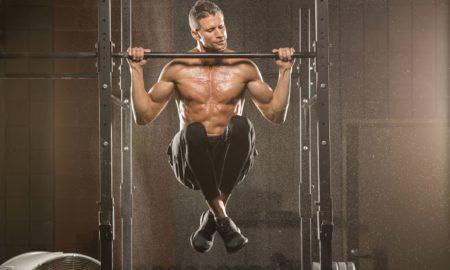When you hit the gym, you want your workouts to give you function, strength, and balance. Lots of exercises will give you one or two of these benefits, but very few will give you all three. Lunges are one type of exercise that gives you all of this and much more.
.
.
With just the use of your lower body, you can improve your full-body strength and include the perfect workout in your routine. What makes dumbbell lunges such an attractive workout?
.
.
1. What are dumbbell lunges, exactly?
.
.
You might have seen people do dumbbell exercises at the gym, but what’s the point of the exercise? For most gym-goers, it’s an essential exercise that is worth incorporating into many different regimes. One of the main reasons it’s such an essential workout is because it gives your legs a proper workout unlike any other kind of exercise.
.
.
Whether you do lunges with or without dumbbells doesn’t matter, it will still do wonders for your legs and your ability to stay balanced. However, dumbbells allow you to progress when it comes to the anabolic part of the exercise. More weight means more muscle mass and you don’t sacrifice anything in terms of stability or safety.
.
.
2. How do you do one?
.
.
If you’re new to dumbbell lunges, you might be wondering how they’re done. It’s a relatively straightforward exercise that will leave you sore the first time you do a fair number of reps. The basic premise of the workout is that you push your leg a significant distance in front of you. However, there are a couple more movements that go into a proper dumbbell lunge.
.
.
You need a bit of open space in front of you to do dumbbell lunges. When you take the first step, make sure that your foot lands on the ground so as to create a right angle in your knee. Only go as far as you feel comfortable, while still accounting for the fact that it has to feel taxing on your legs. During the lunge movement, the knee that isn’t doing the lunging should end up close to the floor at an angle slightly larger than ninety degrees, while not actually touching the floor.
.
.
Balance the rear leg on its toes, while the front leg needs to be positioned firmly on the ground, after touching it heel first. The knee in the front shouldn’t bend too much, so try not to let it get past the toes.
.
.

.
.
3. Body positioning and balance
.
.
As with any kind of exercise, body lunges need proper balance and positioning. You have to know which muscles to engage and how to engage them at any given moment to remain stable throughout the movement. So, how difficult is it to balance during a dumbbell lunge?
.
.
The weights in your hand make it a lot easier to control your own weight, but there are a couple more factors to take into account. Is your starting position stable? At the start of the exercise, you have to stand straight with your feet being nearly shoulder-width apart. Your arms should be relaxed and gripping the dumbbells next to your torso, with the palms facing inwards.
.
.
Keep your back straight throughout the movement, while also making sure your arms aren’t swinging forward and back. As long as you bring them down with your weight, you should feel like they’re just extensions of your arms.
.
.
4. The dumbbells themselves
.
.
When you’re doing a weight-assisted workout, you need to know the appropriate weight to start with. Luckily for beginners, you don’t necessarily need weights while you’re only getting warmed up. Your bodyweight should be enough to give your legs a challenge, at least for starters. Once you feel comfortable with the movement, you can start increasing the weight by adding dumbbells.
.
.
Progress is the name of the game and you have to know your limits before making any significant increases to the weight of the dumbbells. If your form is good, you won’t have issues when using bigger dumbbells. Keep in mind that you shouldn’t make any sudden jumps in difficulty, even when you feel like the starting weight is too easy for you. There’s a lot of balancing involved when it comes to doing lunges, and that means that you have to pace yourself at first. Once you’re able to do three sets of eight reps without issues, you can consider moving it up a notch.
.
.
5. How to make them part of your routine
.
.
Chances are, dumbbells lunges aren’t the only workout in your fitness routine. Obviously, only doing one workout is going to make your trips to the gym dull and ineffective. Once you’ve gotten acquainted with the proper technique of the lunge, how do you incorporate it into your daily or weekly routine?
.
.
This depends on what your fitness regime looks like. Are you focused on bodybuilding and you separate your leg day from your other muscle groups, or do you incorporate various exercises into a daily weight loss regime? Try doing lunges at the start of your workout, as they can be quite demanding, and then go from there.
.
.

.
.
6. How to manage the extra work
.
.
This exercise is particularly demanding because it’s effective as a cardio and an anabolic exercise. Because of this, you can reliably say that you’ll be exhausted after a couple of sets. Keeping your energy up is crucial if you want to get through the rest of your routine and build some muscles along the way.
.
.
As most gym-goers will tell you, whey protein is the best way to keep your energy up during exercises and provide your body with muscle-building nutrients. Whey has been proven to help increase strength when consumed before and after a workout. This is because it contains all nine essential amino acids, which are used in muscle protein synthesis. Your body craves amino acids immediately after a workout in order to use them to build and expand new muscle fibers.
.
.
What is whey protein if not an ideal supplement for hardcore exercises like dumbbell lunges? Make no mistake, it’s a pretty hardcore workout when you add a bit of weight into the mix. Luckily, as long as you supplement yourself properly, it’s not going to leave you completely spent after your standard number of sets.
.
.
7. Why bother with lunges?
.
.
What’s the main reason anyone bothers with fitness? There are a couple of key reasons. You might want to lose a couple of pounds, which means you need workouts that burn calories. On the other hand, perhaps you’d rather work on your muscles and start bodybuilding. This requires anabolic exercises that demand strength and explosive movements. Where do lunges fall on this spectrum of workouts?
.
.
The best part about lunges is that they provide benefits in both cases. You might have noticed that lunges leave you feeling exhausted after a short while. This is because lunges aren’t all that bad cardio exercises. You can lose your breath alongside quite a few calories while doing them, especially if they are assisted with dumbbells.
.
.
The anabolic effect of dumbbell-assisted lunges can’t be overstated. They’re one of the very few workouts that truly isolate your glutes properly. This allows the muscle to build mass without engaging too many of your other leg and back muscles. You can easily add weight via the dumbbells without putting pressure on more sensitive and delicate muscles.
.
.
Conclusion
.
.
Lunges might be one of the few workouts that absolutely everyone can benefit from. They give you a bunch of benefits without being all that difficult to master. As long as you incorporate them into your routine, you will see massive benefits in terms of muscle strength and size, while also significantly improving your balance.
AUTHOR: DOUG GRANT






















You must be logged in to post a comment Login